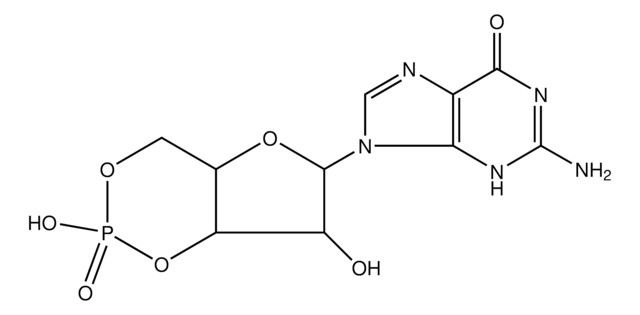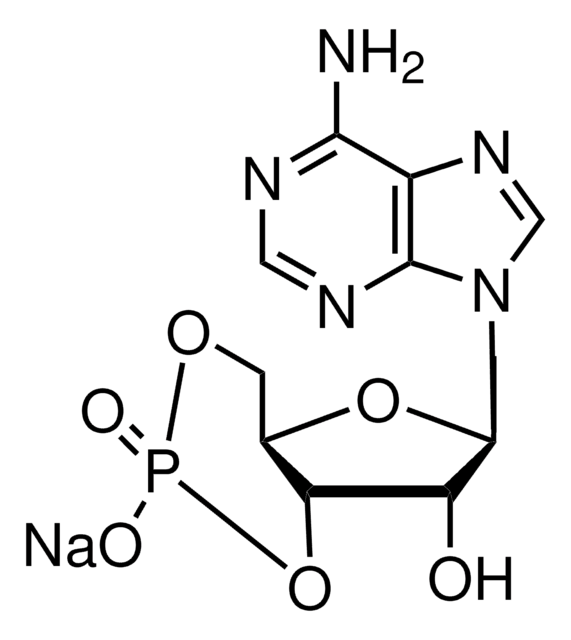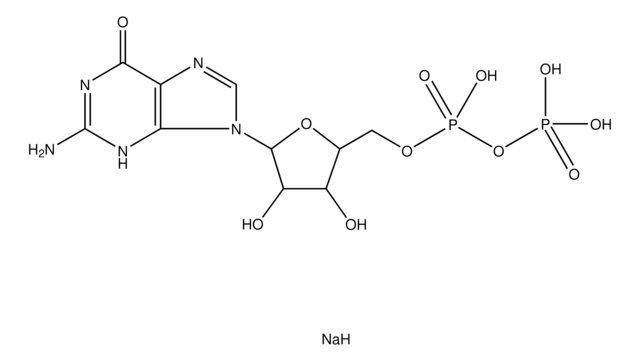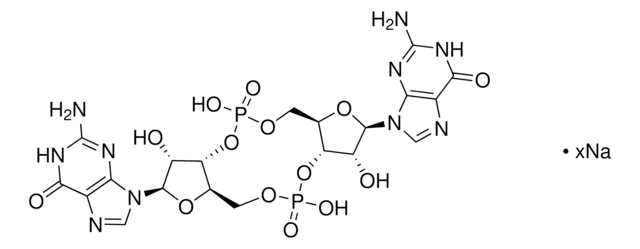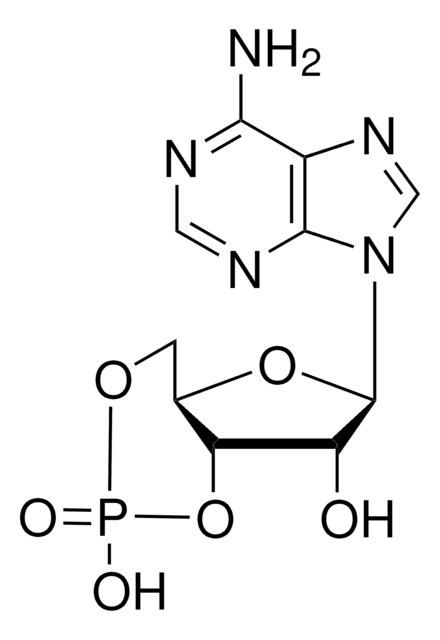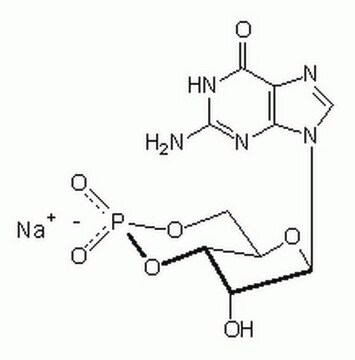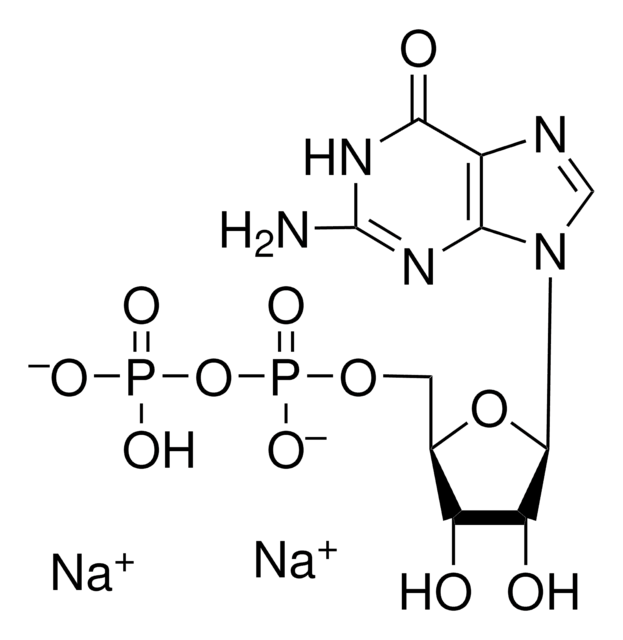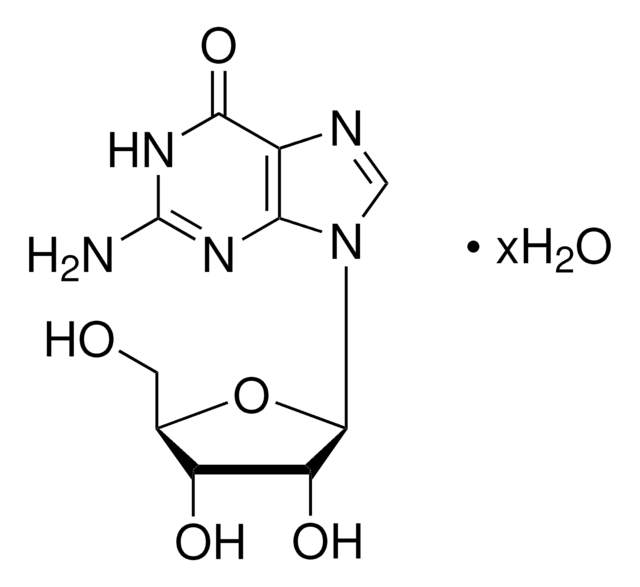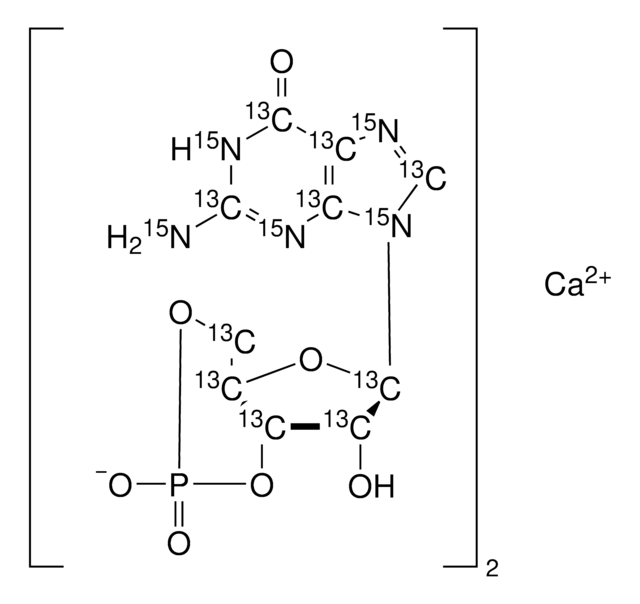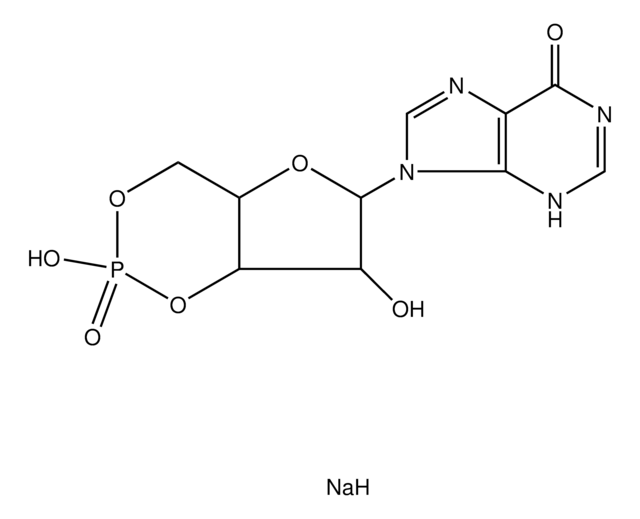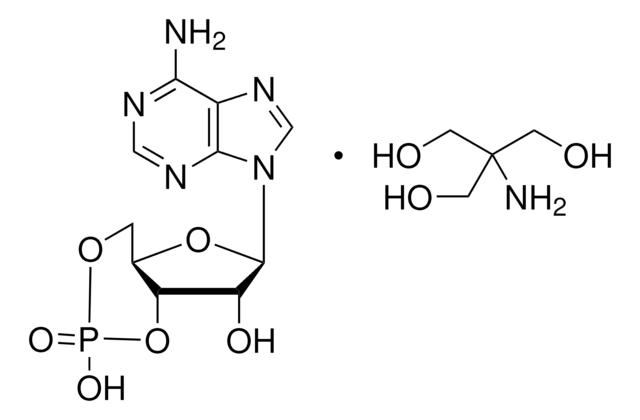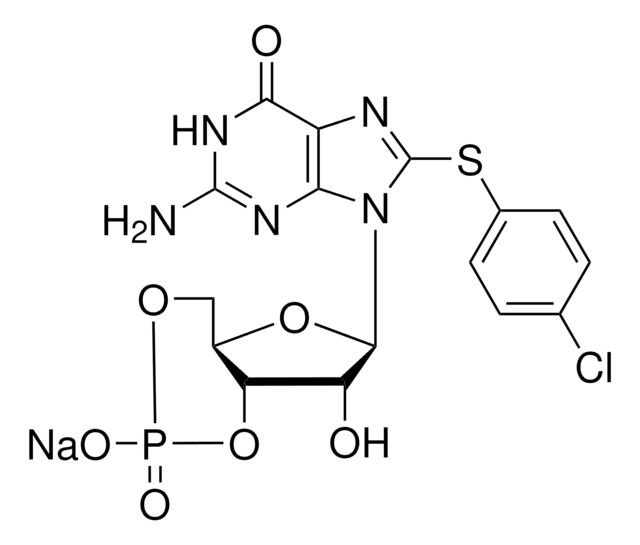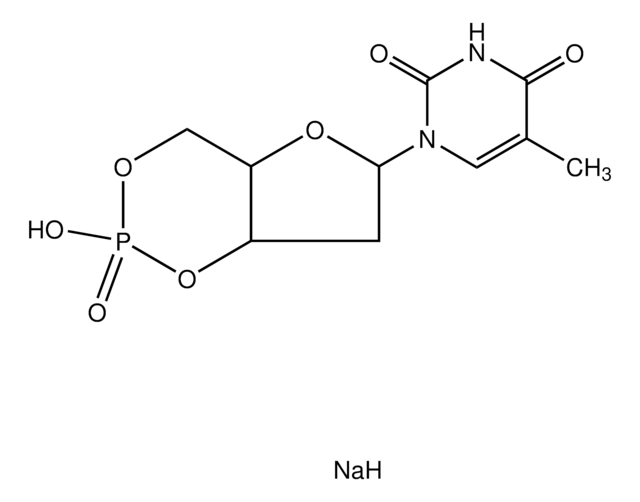Kluczowe dokumenty
G6129
Guanosine 3′,5′-cyclic monophosphate sodium salt
≥99% (HPLC), powder
Synonim(y):
3′,5′-Cyclic GMP monosodium salt, 3′,5′-cGMP-Na, Guanosine 3′,5′-cyclophosphate monosodium salt, cGMP, cyclic GMP
About This Item
Polecane produkty
Poziom jakości
Próba
≥99% (HPLC)
Postać
powder
kolor
white
rozpuszczalność
H2O: 50 mg/mL
temp. przechowywania
−20°C
ciąg SMILES
[Na+].NC1=Nc2c(ncn2[C@@H]3O[C@@H]4COP([O-])(=O)O[C@H]4[C@H]3O)C(=O)N1
InChI
1S/C10H12N5O7P.Na/c11-10-13-7-4(8(17)14-10)12-2-15(7)9-5(16)6-3(21-9)1-20-23(18,19)22-6;/h2-3,5-6,9,16H,1H2,(H,18,19)(H3,11,13,14,17);/q;+1/p-1/t3-,5-,6-,9-;/m1./s1
Klucz InChI
KMPIYXNEROUNOG-GWTDSMLYSA-M
Szukasz podobnych produktów? Odwiedź Przewodnik dotyczący porównywania produktów
Powiązane kategorie
Działania biochem./fizjol.
Cechy i korzyści
Kod klasy składowania
11 - Combustible Solids
Klasa zagrożenia wodnego (WGK)
WGK 3
Temperatura zapłonu (°F)
Not applicable
Temperatura zapłonu (°C)
Not applicable
Środki ochrony indywidualnej
Eyeshields, Gloves, type N95 (US)
Certyfikaty analizy (CoA)
Poszukaj Certyfikaty analizy (CoA), wpisując numer partii/serii produktów. Numery serii i partii można znaleźć na etykiecie produktu po słowach „seria” lub „partia”.
Masz już ten produkt?
Dokumenty związane z niedawno zakupionymi produktami zostały zamieszczone w Bibliotece dokumentów.
Klienci oglądali również te produkty
Nasz zespół naukowców ma doświadczenie we wszystkich obszarach badań, w tym w naukach przyrodniczych, materiałoznawstwie, syntezie chemicznej, chromatografii, analityce i wielu innych dziedzinach.
Skontaktuj się z zespołem ds. pomocy technicznej